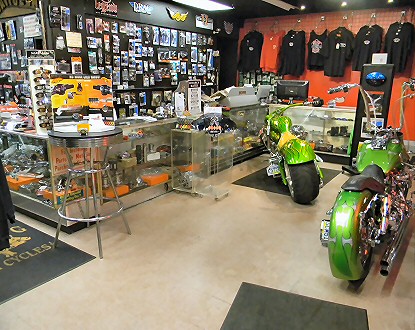Your Best Motorbike Shop for Quality Parts and Accessories
Your Best Motorbike Shop for Quality Parts and Accessories
Blog Article
Understanding the Important Parts of a Motorcycle: A Comprehensive Overview for Enthusiasts
For motorcycle lovers wanting to elevate their riding experience and ensure their bikes run efficiently, comprehending the vital parts of a bike is critical. Each aspect, from the engine's complex operations to the vital function of the stopping systems, not only affects performance but likewise safety and comfort. This guide will walk via the essential components that every cyclist need to know with, making it possible for educated selections in both upkeep and prospective upgrades. As we start this expedition, one must ask: just how does each part engage to develop the seamless adventure every lover looks for?
Engine Elements

The camshaft plays a crucial role in managing the timing of the engine's valves, guaranteeing the exact opening and closing required for reliable gas and air intake, as well as exhaust expulsion. This timing is crucial to keeping optimal engine performance and performance. Additionally, the carburetor or fuel injection system, relying on the motorcycle model, is accountable for blending air with fuel in the right proportion for burning.
The air conditioning system, either air or liquid-based, functions to maintain the engine's temperature within functional limits, stopping getting too hot and making sure long life - motorcycle parts nz. Each element, diligently made and integrated, adds to the smooth procedure of the engine, specifying the bike's power outcome and total performance
Transmission System
Indispensable to the motorbike's performance, the transmission system makes sure effective power transfer from the engine to the wheels. This system makes up several important elements, consisting of the clutch, gearbox, and last drive, each playing an important function in converting the engine's power into movement. The clutch, typically run by a hand lever, offers to engage and disengage the engine from the transmission, enabling smooth equipment changes and regulated acceleration.
The gearbox, commonly referred to as the transmission correct, contains a collection of gears that motorcyclists can manually change via to change the bike's rate and torque output. These gears are set up in a sequence that enables the motorcycle to accelerate efficiently and maintain ideal engine efficiency throughout numerous rates. A lot of motorbikes make use of a consecutive gearbox, needing the motorcyclist to shift equipments in a fixed order.
Braking Devices
While comprehending the transmission system is key to taking advantage of a motorcycle's power, equally crucial is the capacity to regulate and stop that power efficiently, which is where braking devices enter into play. Brakes are important for safety and performance, offering the biker with the required control to navigate different terrains and conditions. Normally, bikes feature two sorts of stopping systems: disc brakes and drum brakes.
Disc brakes are a lot more widespread in contemporary motorbikes due to their remarkable efficiency. This system offers much better warm dissipation, regular performance, and boosted stopping power, specifically in wet conditions.
Alternatively, drum brakes, though less typical, are still located in some bikes. They function by pushing brake shoes against the internal surface area of a drum affixed to the wheel. While usually less reliable in heat dissipation and quiting power, drum brakes are simpler and much more economical.
Comprehending these stopping systems' nuances permits bikers to maintain their motorbikes appropriately and value the engineering that guarantees risk-free and efficient stopping.
Suspension and Steering
Suspension and steering systems are important parts that dramatically influence a motorcycle's handling and adventure comfort. The shock absorber, including forks at the front and shock absorbers at the rear, takes in roadway irregularities, enhancing security and control. Front forks, inverted or normally telescopic, compress and rebound to reduce impacts, while back shock absorbers preserve tire call with the roadway, vital for traction and safety and security.
Guiding, centered around the handlebars, connects the biker to the bike's directional control. The steering head bearings ensure smooth procedure, permitting accurate maneuverability. Proper placement and maintenance of these bearings are vital for predictable steering response and decreasing rider exhaustion.
The suspension's adjustability is one more crucial aspect; preload, damping, and rebound setups permit modification to fit numerous riding problems and designs. This versatility is vital for enhancing efficiency, whether browsing city streets or taking on rugged trails. Innovations like digital shock absorber provide real-time modifications, enhancing trip top quality throughout varied surfaces.

Electrical Solutions
After making certain a controlled and smooth ride with efficient suspension and guiding systems, attention turns to the electrical systems, a crucial aspect of modern-day motorcycles. These systems play an important role not only in beginning the engine yet also in powering numerous components that improve the capability and safety and Click Here security of the motorcycle.
At the heart of a motorcycle's electrical system is the battery, which stores electric energy necessary for starting the engine and powering auxiliary systems - motocross gear. The alternator or generator, combined with the rectifier-regulator, ensures the battery remains charged while the motorcycle functions, converting power right into electric power and preserving voltage degrees
The ignition system, one more vital component, is accountable for igniting the air-fuel mix in the engine's cylinders. Modern motorcycles typically use an electronic ignition system, providing higher efficiency and reliability contrasted to traditional systems.
Lights systems, consisting of headlights, tail lights, and indicators, are additionally essential, ensuring visibility and security for the motorcyclist. Extra electronic parts such as sensors, control systems, and displays contribute to innovative features like fuel injection management, anti-lock stopping systems (ABDOMINAL), and digital control panels, additionally enhancing the riding experience.
Final Thought
A thorough comprehension of a motorbike's essential parts, including the engine, transmission system, braking devices, suspension, guiding, and electric systems, is vital for lovers aiming to enhance performance, convenience, and safety and security. Proficiency of these elements permits educated choices relating to maintenance and upgrades, ultimately boosting the riding experience. By integrating this understanding, bikers can ensure their motorbikes run at peak efficiency and dependability, consequently making best use of both satisfaction and long life of their cars.
For bike enthusiasts looking to raise their riding experience and ensure their bikes run efficiently, recognizing the essential parts of a motorbike is vital.Essential to the motorcycle's performance, the transmission system guarantees reliable power transfer from the engine to women's motorcycle riding jacket the wheels.While comprehending the transmission system is key to utilizing a bike's power, similarly essential is the capacity to open face helmet for men regulate and stop that power successfully, which is where braking devices come into play. Commonly, motorcycles include 2 types of braking systems: disc brakes and drum brakes.
A detailed understanding of a motorcycle's crucial elements, including the engine, transmission system, braking devices, suspension, guiding, and electric systems, is crucial for fanatics aiming to optimize safety and security, convenience, and efficiency.
Report this page